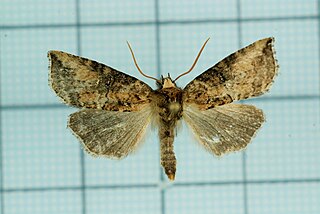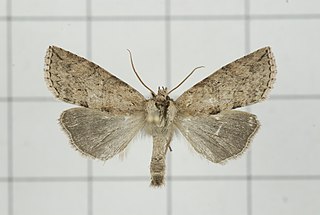
Rattus is a genus of muroid rodents, all typically called rats. However, the term rat can also be applied to rodent species outside of this genus.

Arisaema is a large and diverse genus of the flowering plant family Araceae. The largest concentration of species is in China and Japan, with other species native to other parts of southern Asia as well as eastern and central Africa, Mexico and eastern North America. Asiatic species are often called cobra lilies, while western species are often called jack-in-the-pulpit; both names refer to the distinctive appearance of the flower, which consists of an erect central spadix rising from a spathe.

Myrmarachne is a genus of ant-mimicking jumping spiders that was first described by W. S. MacLeay in 1839. They are commonly called antmimicking spiders, but they are not the only spiders that have this attribute. The name is a combination of Ancient Greek μύρμηξ, meaning "ant", and ἀράχνη, meaning "spider".

This is a gallery of international and national flags used in Asia.

Dorcus is a genus of beetles in the family Lucanidae. Of the 30-odd species, most occur in Asia and India; two are found in southern Europe, and two species are from North America. Previously, specimens with serriform teeth on the mandibles and sable pigment were called Serrognathus whereas specimens with but a singular or multiple bulky notches on the mandibles and lustrous sable pigmentation were called Dorcus.

The Thyatirinae, or false owlet moths, are a subfamily of the moth family Drepanidae with about 200 species described. Until recently, most classifications treated this group as a separate family called Thyatiridae.

Look East policy is an effort by the government of India to cultivate extensive economic and strategic relations with the nations of Southeast Asia to bolster its standing as a regional power and a counterweight to the strategic influence of the People's Republic of China. Initiated in 1991, it marked a strategic shift in India’s perspective of the world. It was developed and enacted during the government of Prime Minister Narsimha Rao (1991–1996) and rigorously pursued by the successive administrations of Atal Bihari Vajpayee (1998–2004) and Manmohan Singh (2004–2014).
This article details the fixtures and results of the Cambodia national football team.

Comostola is a genus of moths in the family Geometridae erected by Edward Meyrick in 1888. They are found primarily in Asia and Australia.
The decolonisation of Asia was the gradual growth of independence movements in Asia, leading ultimately to the retreat of foreign powers and the creation of several nation-states in the region.

Epipsestis is a genus of moths belonging to the subfamily Thyatirinae of the Drepanidae. It was erected by Shōnen Matsumura in 1921.

Epipsestis nikkoensis is a moth of the family Drepanidae first described by Shōnen Matsumura in 1921. It is found in the Chinese provinces of Jilin, Shaanxi and Hubei and in Japan, Taiwan, the Russian Far East, Nepal, Bhutan, Myanmar, the Korean Peninsula, Thailand and northern Vietnam.
Epipsestis manmiaoyangi is a moth of the family Drepanidae first described by Gyula M. László and Gábor Ronkay in 1999. It is found in Taiwan.

Epipsestis bilineata is a moth of the family Drepanidae first described by Warren in 1915. It is found from India and Nepal to Taiwan.
Epipsestis castaneata is a moth in the family Drepanidae. It was described by Warren in 1915. It is found in Sikkim in India, Hunan in China and in Nepal and Vietnam.
Epipsestis albidisca is a moth in the family Drepanidae. It is found in western India, Sikkim, Nepal, Pakistan, China and Vietnam.
Epipsestis renalis is a moth in the family Drepanidae. It is found in western India, Nepal, Hunan in China, Pakistan, Vietnam and Thailand.
Pakistan–Taiwan relations mainly involve commerce and trade. The relationship between Pakistan and Taiwan is more likely to be of economic significance rather than political, as Pakistan is a close ally of China.
This article provides details of international football games played by the Singapore national football team from 1948 to 1969.












